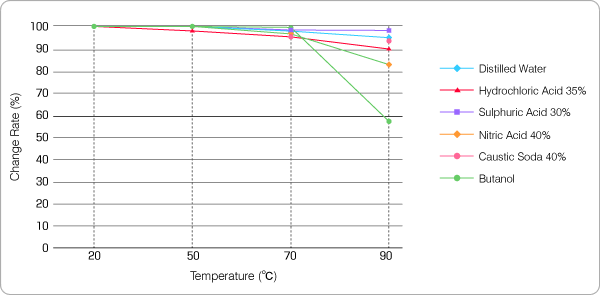Home > Product lineup > CPVC > Chemical Resistance
|
|
| Chemicals | Concentration | 20°C/68°F | 60°C/140°F | 80°C/176°F |
|---|---|---|---|---|
| Hydrochloric Acid | 20% | |||
| Hydrochloric Acid | 35% | |||
| Nitric Acid | 40% | |||
| Nitric Acid | 60% | |||
| Surfuric Acid | 30% | |||
| Surfuric Acid | 50% | |||
| Sulphurous Acid | 100% | |||
| Acetic Acid | 60% | |||
| Acetic Acid | 95% | |||
| Carbonic Acid | 100% | |||
| Caustic Soda | 40% | |||
| Caustic Soda | 60% | |||
| Sodium Chloride | Saturate | |||
| Sodium Carbonate | Saturate | |||
| Sodium Sulfate | Saturate | |||
| Hydrogen Peroxide | Less than 30% | |||
| Ammonium Carbonate | Saturate | |||
| Methanol | 100% | - | ||
| Ethanol | 100% | - | ||
| Isopropanol | 100% | |||
| Butanol | 100% | |||
| Glycerine | 100% | |||
| Acetone | 100% | - | - | - |
| Methl Ethyl Ketone | 100% | - | - | - |
| Toluene | 100% | - | - | - |
![]() : Excellent,
: Excellent, ![]() : Good,
: Good, ![]() : Fair,
: Fair, ![]() : No good, -: Unavailable
: No good, -: Unavailable


